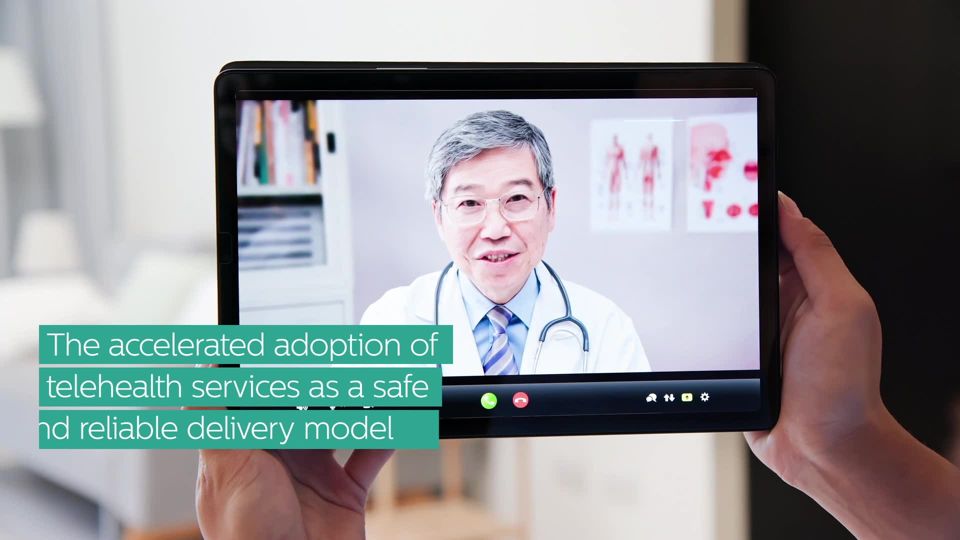Oct 21, 2021
The Digital Health Skills Gap
As technology’s role in strengthening health system resilience becomes clearer, healthcare leaders face many barriers, such as staff inexperience with digital health technologies, hindering their ability to progress digital transformation and future plans.
Rising healthcare costs, lack of experienced staff, and staff shortages are driving demand for digital health technologies that can improve efficiency of care. This is especially true in Australia where border closures have placed increased strain on healthcare facilities that were reliant on international talent while already struggling with staff shortages. On top of that, the WHO estimates that by 2035 there will be a global deficit of about 12.9 million skilled healthcare professionals, with further estimates indicating that the world needs 6 million more nurses to achieve global health targets. According to the 2021 Philips Health Index Australian report, 43% of healthcare leaders point to staff inexperience with new technologies as the biggest barrier to driving further adoption of digital solutions. One third of Australian healthcare leaders (33%) would rather hire new staff with expertise in digital patient data, while a similar proportion (29%) of leaders cited staff shortages as another barrier. In the 2020 Future Health Index report, which focused on the perspectives of the next generation of healthcare professionals and their digital readiness, roughly half (47%) of younger Australian healthcare professionals indicated they didn’t know how to use digital patient data to support in patient care The adoption of new technology has the potential to transform Australia’s healthcare system, increasing access to care, improving health outcomes for patients, streamlining workflows and reducing the burden in acute care services. As the Digital Health Association begins the process of outlining the next national digital health strategy for 2022-2027 [1], what role does education play in facilitating healthcare’s digital transformation?

Agile systems One of the benefits of digital solutions for healthcare is that it supports scalability and evolvement of a network; allowing for healthcare providers to continuously develop their technical offering and as a result, deliver better models of management and care by leveraging new solutions. This constant ability to adapt the healthcare model through technology needs to be met with an equally agile education system that can keep up with the transformation taking place. For this to happen, there needs to be consistent alignment with healthcare leaders and clinicians to creating a learning environment that anticipates the future needs of the industry. A major component of creating an effective digital healthcare ecosystem is navigating the change management required to accommodate the transition. This includes not only mapping out the different care solutions that can be delivered virtually and those that need to be delivered in-person, but effectively showcasing the value of new ways of working The National Digital Health Workforce and Education Roadmap [2] details. the impact of digital health adoption on the Australian workforce and the integration of technology in supporting ways of working. Minimum requirements for digital health education As the largest employing industry in Australia, accounting for 14% of Australian workers [3], the Australian Government has vested interest in ensuring the education standards of the Health Care and Social Assistance sector. Both state and federal government organisations have a responsibility to advocate for and drive the implementation of the education reforms required to support the transformation of the national healthcare industry. Additionally, increased investment in education across the country has the potential to minimise ongoing staff shortages, allowing the local healthcare system to build a workforce of home-grown talent. This includes outlining new minimum requirements for education in digital health technologies through the effective collaboration of both the healthcare and education sectors. Through this process of standardisation, efforts to close skills gaps through effective learning models can be assessed more holistically and changes to requirements can be implemented across the board. By taking a blanket approach, Australia’s government leaders can ensure that everyone within the sector is equipped to support the future of healthcare, armed with the same skills. Beyond changing the framework of educational requirements, government leaders need to take more responsibility in assigning funding to programs that focus on digital transformation. Funding efforts, including that of the 2021 federal budget, which dedicated $1.2 billion towards the Digital Economy Strategy [4], need to acknowledge the education element that is required to make change possible. The ability to monitor and assess the effectiveness of healthcare standards and digital education is a crucial part to assigning budget, along with tapping into clinicians and industry leaders for insights and direction for funding. Strategic Partnerships PWC also highlights the importance of strategic industry partnerships in supporting a shift to collective leadership [5], which allows for change management to accommodate the various perspectives of stakeholders across the healthcare industry. Initiatives such as the Digital Health Cooperative Research Centre are encouraging partnership between key stakeholders including state and federal governments, private and public health providers, education institutes and technology businesses. The seven-year program will invest $230m to support the development of a digital health future in Australia. The opportunity for partnership extends to universities and healthcare technology companies for the purpose of knowledge sharing. Private companies play an important role in not only driving digital change within the healthcare sector but in leading the transition as a result of their solutions, products and services. This type of collaboration can help highlight key trends and build a more robust education strategy that responds to the new ways of care delivery. With the support of both the private and public sectors, Australia can transform care in the country and change the healthcare narrative through digital adoption.
Education bodies and representative organisations must also play a proactive role in enhancing education standards partnerships between public and private organisations. This type of collaboration is core to creating an effective transformation strategy for Australian healthcare and is an opinion echoed by healthcare leaders across the country, with 35 per cent saying that prioritising strategic partnerships and collaborations is among the top actions that their hospital or healthcare facility currently needs to take in order to successfully implement digital health technologies, according to 2021 Philips Future Health Index.
[1] https://www.themandarin.com.au/167030-australians-urged-to-have-say-on-digital-health-strategy/ [2] https://www.digitalhealth.gov.au/sites/default/files/202011/Workforce_and_Education-Roadmap.pdf [3] https://www.nationalskillscommission.gov.au/jobs-industry [4] https://www.pm.gov.au/media/modern-digital-economy-secure-australias-future [5] https://www.pwc.com.au/health/health-matters/workforce-healthcare.html




